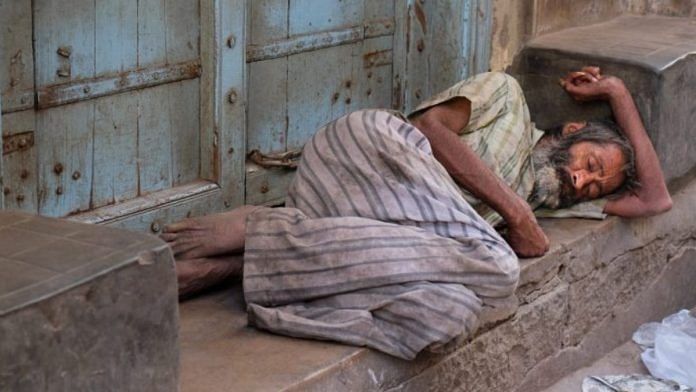Thank you dear subscribers, we are overwhelmed with your response.
Your Turn is a unique section from ThePrint featuring points of view from its subscribers. If you are a subscriber, have a point of view, please send it to us. If not, do subscribe here: https://theprint.in/subscribe/
The social dynamism in India often been seen or faced as a complex entanglement of class strata, homogeneous groups of racial segregation, and worrying divisions of religious groups, de-facto casteism, illiberal populism. All these makes it a Kafkaesque for the rural poor and the middle-class irrespective of the spatial identity for social mobilisation. A similar picture can be traced from the recent 2024 report of the income inequality in India. Finding and climbing up the ladder in India might be difficult when there are less ladders on the board.
On to the report:
A very recent working paper from the World Inequality Lab (WIL) presented data on inequality in India. The report has adjoint co-authors like Nitin Kumar Bharati, Lucas Chancel and Tomas Piketty and Anmol Somanchi. The long-run income inequality dynamics in India over the period of 1951-2022 has seen an increasing graph of the share of the top 10% population touching nearly 60% in the recent years except till 1982 where it actually got reduced to 30% from 37% in 1951. The bottom 50% roughly accounts for 15% of India’s national income in 2022-23. The distribution is as skewed as it shows that to earn the average income in India (INR 230,000) one has to be at the nearly 90 th percentile. By this data of top10% share’s, India stood second only to South Africa. And when it comes to the top 1%, none tops it with 22.6% share but it is not the same in case of wealth share of the top 1%, it comes in the middle pack. Unlike UK and France, which have the most equal distribution among the countries concerned both in income and wealth inequalities.
Juxtaposing it with, often characterises as its belligerent neighbour, China, India loses its echelon on the equality ladder as data shows a much narrower gap between China and India’s top 1% income share not wealth, almost a nearly 50% gap (22.6% India vs 15.7% China) while they both have started gaining pace almost at the same levels of income in the 1950s and 1960s. Mixed economy worked different for China as it showcased high growth and moderate inequality which is diametrically opposite of what India’s case shows, questions India’s kakistocracy. The new welfarism of India’s right although has been in sectors like housing, toilets, electricity, and banking in the last decade, though official statistics suggest a rather sluggish growth even before the COVID-19 pandemic hit. Income growth rates continuously fell from over 6% in 2015 to 1.6% in 2019.
Holding the Pareto rule: Minority owns the majority
The topic of inequality is not abstract it is as concrete as it can be. Under the umbrella of inequality, there comes many a pernicious form of social injustice. Gatekeepers of conglomerate capitalism has been mortifying democracy and making India approaching towards a more plutocratic one. As the creators of this report aptly concluded that “The Billionaire Raj headed by the bourgeoisie force is more unequal than the British Raj headed by the colonialist force”.
These pieces are being published as they have been received – they have not been edited/fact-checked by ThePrint

